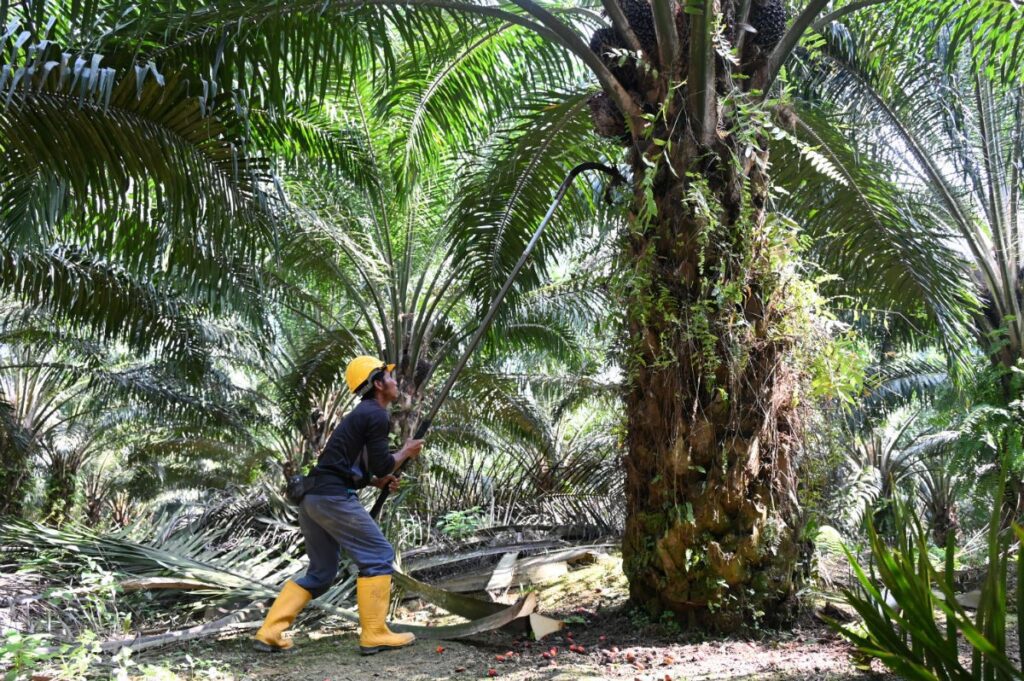A fungus threatens global rubber production
Over the past few years, a fungus has reduced latex yields by 20 to 40 percent in many growing regions.
The fungal pandemic
In 2016, the first major outbreak of Pestalotiopsis was recorded on a plantation in the north of Sumatra. Since then the disease has been spreading rapidly. The fungus is now found on plantations in Thailand, Malaysia and Indonesia – 70 percent of the world’s rubber come from these three countries. Pestalotiopsis is also spreading in Vietnam, the third biggest rubber producer, in India and China. The Philippines aren’t a major grower, but rubber is one of the country’s major export goods. In March, the news magazine Rappler reported, that a state of emergency had been declared in Basilan province because 90 percent of rubber trees were affected by the fungus.
High humidity and strong winds promote the distribution of fungal spores. The leaves of infected trees at first show round, light brown spots. As the disease progresses, the leaves turn brown and drop off – hence the name “leaf fall disease”. According to a study by the Faculty of Agriculture at the Sumatra university, the latex yield is reduced by 25 percent when a tree has lost half its leaves, a leaf loss between 75 and 90 percent decreases the yield by up to 75 percent. The leaves regrow, but only to a smaller size, the leaf canopy is lighter, individual branches die off, and when the tree is infected multiple times it will die. The spores can infect trees at any time of the year and any stage of their development – saplings and young trees are as much at risk as old, mature trees. The first symptoms will appear between four and 16 days after the infection. The scientists on Sumatra compared six rubber tree clones. They found that their susceptibility to Pestalotiopsis varies, but none of the clones were resistant.
Attempts to fight Pestalotiopsis spores with fungicides have been mostly unsuccessful. That’s unsurprising: to be effective, a fungicide has to be sprayed from the ground as well as from above with drones to treat the tree canopy. And once the first brown spots have been detected on the leaves, any fungal treatment is pointless because the tree has already been infected.
Stressed and malnurished
These days, many plantations replant with only one type of clone: a high yielding variety is grafted onto fast growing rootstock. This type of clone yields more latex milk and can be tapped 12 to 18 months earlier than previously possible. On the flip side: such high yielding clones are extremely stressed and therefore more susceptible to disease than other, lower yielding trees. It is possible that a reduced availability of chemical fertilizer contributed to the increased spread of Pestaloptiopsis in 2022. On plantations where sufficient amounts of fertiliser were applied, yield reductions seemed to be less significant.
Rubber tree monocultures, too, are problematic. Small holder farmers who grow rubber trees as solitaires or in small groups amidst other timber varieties report fewer or no Pestalotiopsis infections.
The use of compost rather than synthetical fertiliser would be advantageous, though on plantations, compost cannot be produced in sufficient amounts.
Palm oil replacing rubber
The spread of Pestalotiopsis throughout the big rubber producing countries has on many plantations led to the decision not to replant with rubber. Rubber tree nursery are often no longer maintained. Instead, on large areas even productive rubber trees are ripped out and replaced with oil palms. Compared with rubber, the world market price for palm oil is very good. Oil palms come into yield after only four years and hence are profitable much earlier. All tasks on palm oil plantations can be done by unskilled labourers, but as the work is physically very demanding, most plantations employ only men. Rubber tapping is less strenuous, but it is highly skilled work that requires training.
With the spread of Pestalotiopsis, the availability of natural rubber no longer is guaranteed. If tire manufacturers and other producers want to make sure, that plantations will not continue to replace rubber trees with oil palms, they will have to break the cycle of low world market prices and the resulting necessity to produce ever more latex milk in ever shorter time. Supporting rubber producers through better prices, investments in research on plant nutrition, the breeding of more resistant (but possibly lower yielding) clones and the promotion of growing rubber trees as part of a diverse timber culture would be important steps. The Fair Rubber Association is an important partner in this.
A longer version of this article in German appeared in the magazine Der Eilbote, No. 14/2023.

Higher world market prices: Palm oil plantations displace rubber cultivation.

Fair Rubber guarantees tappers a better income.

Photo leaf: Leaf fall disease is currently spreading
